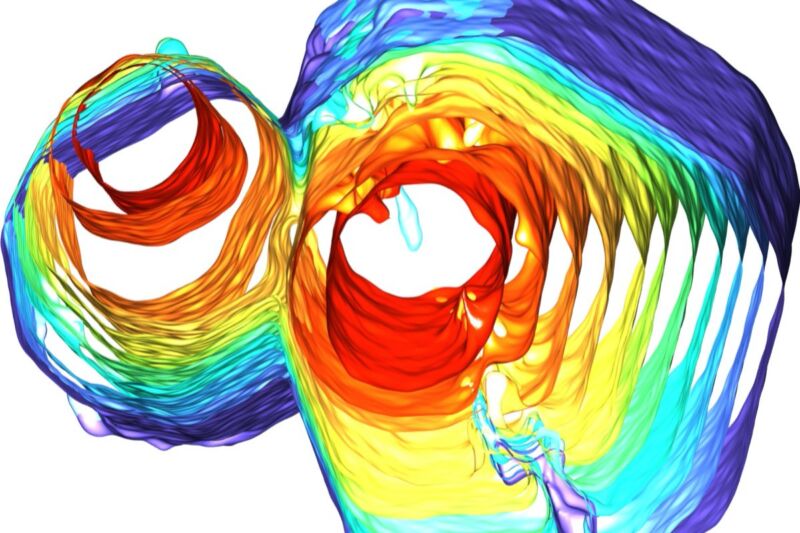Self-healing quasicrystals may resurrect hopes of practical applications

Enlarge / X-ray tomography visualization showing two quasicrystals as they start to meld together during cooling. University of Michigan scientists have discovered that quasicrystals exhibit a self-healing phenomenon that could reduce defects. (credit: Shahani Group/University of Michigan)
Quasicrystals are a unique class of materials with considerable promise for practical applications because of their unusual properties. But progress toward realizing that commercial potential has been hampered by the fact that the usual manufacturing processes for quasicrystals are prone to producing defects in the form of tiny cracks between crystals known as grain boundaries. A new paper published in the journal Nature Communications found that under certain conditions, quasicrystals can heal themselves-potentially reviving commercial interest in these materials.
The earliest quasicrystals found were metal alloys, usually aluminum with one or more other metals. That has made them useful for a handful of practical applications, such as non-stick coatings for frying pans and anti-corrosive coatings for surgical equipment. But scientists would love to create more complex quasicrystals that are capable, for example, of manipulating light to create new kinds of camouflage or cloaking.
"One reason why industry gave up on quasicrystals is because they're full of defects," said co-author Ashwin Shahani, a materials scientist at the University of Michigan. "But we're hoping to bring quasicrystals back into the mainstream. And this work hints that it can be done."
Read 11 remaining paragraphs | Comments